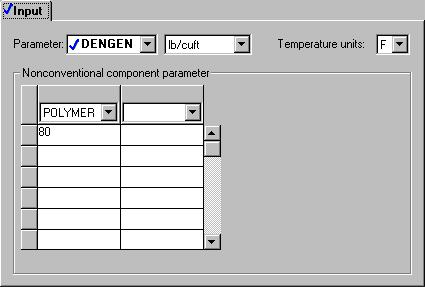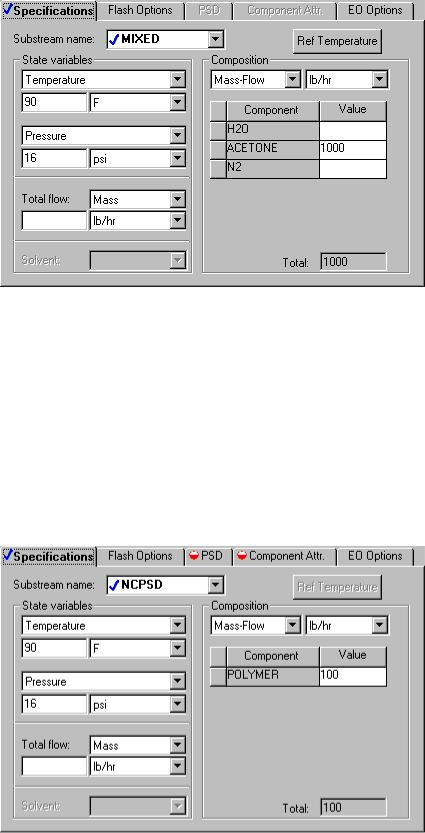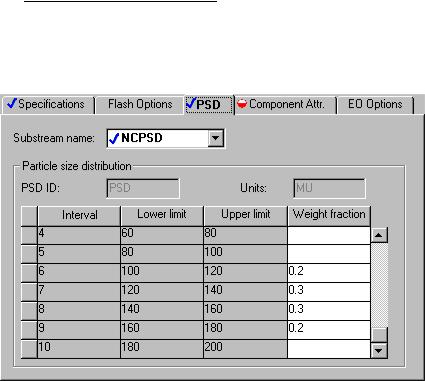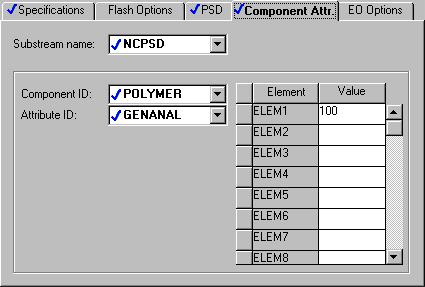
- •Contents
- •About Getting Started Modeling Processes with Solids
- •Why Use Solids Simulation?
- •Sessions in this Book
- •Using Backup Files
- •Related Documentation
- •Installation Manual
- •User Guide
- •Technical Support
- •World Wide Web
- •Hours
- •Modeling Coal Drying
- •Coal Drying Flowsheet
- •Drawing the Graphical Simulation Flowsheet
- •Stream Classes and Substreams
- •Specifying Components
- •Defining Properties
- •For More Information on the HCOALGEN Model
- •Entering Stream Data
- •Specifying Blocks
- •Using a Calculator Block to Control Drying
- •Running the Simulation
- •Examining Simulation Results
- •Exiting Aspen Plus
- •Modeling Coal Combustion
- •Coal Combustion Flowsheet
- •Starting Aspen Plus
- •Opening an Existing Run
- •If Your Saved File Solid1.apw is Not Displayed
- •Saving a Run Under a New Name
- •Drawing the Graphical Simulation Flowsheet
- •Changing the Stream Class
- •Adding Components to the Model
- •Defining Properties
- •Change the Heat of Combustion Method for Coal
- •Specify the Heat of Combustion for Coal
- •Specifying the Air Stream
- •Specifying Unit Operation Models
- •Specify the Splits for the SSplit Block
- •Defining a Calculator Block
- •Specify the Calculations to be Performed
- •Specify When the Calculator Block Should be Run
- •Running the Simulation
- •Examining Results
- •Exiting Aspen Plus
- •Modeling Gas-Solid Separators
- •Gas-Solid Separation Flowsheet
- •Starting Aspen Plus
- •Opening an Existing Run
- •If Your Saved File Solid2.apw is Not Displayed
- •Saving a Run Under a New Name
- •Drawing the Graphical Simulation Flowsheet
- •To Update the Title for This Simulation
- •Running the Simulation
- •Examining Results
- •Exiting Aspen Plus
- •Modeling Polymer Recovery
- •Polymer Recovery Flowsheet
- •Starting Aspen Plus
- •To Specify the Application Type and Run Type for the New Run
- •Drawing the Graphical Simulation Flowsheet
- •Specifying Components
- •Defining Properties
- •Defining Stream Conditions
- •Entering Block Specifications
- •Enter Specifications for the CCD Model
- •To Learn More about the Cyclone Model Using Help
- •Enter Specifications for the Cyclone Model
- •To Specify That the Mixer Block DRIER Operates at 15 psi
- •Enter Specifications for the HyCyc Model
- •Running the Simulation
- •Examining Results
- •Exiting Aspen Plus
- •Connecting to the Aspen Plus Simulation Engine

16Click  to continue.
to continue.
The Required Properties Input Complete dialog box appears.
Correct representation of physical properties is an essential component of process modeling. For many simulations, the only physical property specification that you must provide is the selection of an option set. The Required Properties Input Complete dialog box shows that the Aspen Plus physical property system has many optional capabilities that you can use to increase the accuracy of physical property calculations.
17Click OK to move to the next required input.
Defining Stream Conditions
The Streams FEED Input Specifications sheet appears.
For the MIXED substream, Aspen Plus requires two thermodynamic specifications, and enough information to calculate the flow rate of each component.
1 Enter the following specifications for the MIXED substream:
Temperature |
90.0 F |
Pressure |
16.0 psi |
Composition |
Mass-Flow |
ACETONE value |
1000 lb/hr |
5-14 • Modeling Polymer Recovery |
Getting Started - Solids |

You can access other substreams for stream FEED by changing the substream name.
2In the Substream name field, click  and select NCPSD.
and select NCPSD.
3Enter the following specifications for the mixed substream:
Temperature |
90.0 F |
Pressure |
16.0 psi |
Composition |
Mass-Flow |
POLYMER value |
100 lb/hr |
The Streams FEED Input Specifications sheet is now complete.
Getting Started - Solids |
Modeling Polymer Recovery • 5-15 |

4Click  to continue.
to continue.
The Streams | FEED | Input | PSD sheet appears. Use this sheet to define the particle size distribution for the POLYMER that you placed in the NCPSD substream.
By default, Aspen Plus uses a particle size distribution of 10 size ranges covering 20 microns each. The default size ranges are appropriate for this simulation. On this sheet, enter the weight fraction of coal in each size range.
5In the Weight fraction fields, enter the following values:
Interval Weight Fraction
60.2
70.3
80.3
90.2
6Click  to continue.
to continue.
The Stream | FEED | Input | Component Attr. sheet appears. On this sheet, define the component POLYMER in terms of the constituents in its GENANAL. Aspen Plus does not require you to use all 20 constituents. Since you are using only the first constituent to characterize POLYMER, the first element of GENANAL is 100%.
7In the ELEM1 field, enter a value of 100.
5-16 • Modeling Polymer Recovery |
Getting Started - Solids |

8Click  to continue.
to continue.
The Streams | HOT-N2 | Input | Specifications sheet appears. Stream HOT-N2 is the feed stream used to dry the polymer.
9Enter the following specifications for the MIXED substream:
Temperature |
350.0 F |
Pressure |
16.0 psi |
Composition |
Mass-Flow |
N2 value |
3000 lb/hr |
10Click  to continue.
to continue.
The Streams | WASH-H2O | Input | Specifications sheet appears.
Stream WASH-H2O is the feed stream used to wash the polymer in the CCD.
11Enter the following specifications for the MIXED substream:
Temperature |
200.0 F |
Pressure |
16.0 psi |
Composition |
Mass-Flow |
H2O value |
400 lb/hr |
12 Click  to continue.
to continue.
Getting Started - Solids |
Modeling Polymer Recovery • 5-17 |
